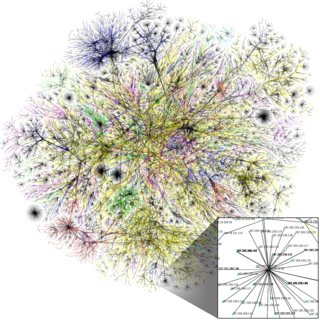Internet addiction
This section may contain material not related to the topic of the article .(August 2024) |
Internet addiction is very common across the world. Factors of internet addiction be anything online, whether excessively playing video games, compulsive shopping, going back and forth with social media, etc. [22] Major symptoms of internet addiction consist of "depression, anxiety, isolation, avoidance of work, and some physical conditions of backache, headaches, insomnia, neck pain, etc. [22] Particularly in South Korea, almost 95% of adults own a smartphone which some experts say is becoming increasingly addicted to the Internet. [23] This is because the South Korean environment allows easy access to the internet to almost any online users in the country. Any ages of Koreans can access the internet easily from one neighborhood to another. Almost 20% of the South Korea population are in major risk of internet addiction which advocates to nearly 10 million people according to a 2018 government survey.
Issues within the community
In South Korea, there are places where anyone can access the internet easily at common places known as "PC Bang" in American terms known as "PC Café". PC Bangs are often "shiny places with big, comfy chairs, huge screens and fast Internet, all for about a dollar an hour". [23] Most of the PC Bangs are open 24 hours a day which is a major cause to internet addiction from ages type ranging from young teenagers to adults. A PC Bang owner in Seoul's upmarket Gangnam neighborhood stated the following "some customers who play too long gets smelly, and other customers start to complain, so we have to ask them to leave". [23] Due to major issues similarly to the owner stating above, Seoul's Hanyang University psychiatrists who studies internet addiction believes that South Korea is facing a public health crisis.
Symptoms
Although there's major disagreements whether Internet Addiction causes symptoms, "most authors agree that the preoccupation with the Internet and withdrawal symptoms (e.g., dysphoria, anxiety, irritability) when unable to access the internet must be present". [24] Just like many common addictions, symptoms occur whether its alcohol, drugs, gambling, shopping, and many more. Every addiction is unique from one another due to its nature of addiction but behind the addiction are almost too similar due to what it is doing with the brain controlling and manipulating the human to do a certain act based on the type of addiction.
Other symptoms of internet addiction can consist "development of tolerance, repeated inability to cut back on Internet use, disregard for the consequences (physical, psychological, and/or social) of overuse, loss of interest in other activities in favor of Internet use, and Internet use as a means of escape or mood elevation (Tao et al., 2010)". [24] Just like all addictions, there are treatments that are created to treat and solve an addiction.
Outlook & treatments
Some ways that internet addiction can be solved especially for younger children is for parents to be more proactive when letting children having access to the internet on the daily as well as the number of devices. Parents are critical when it comes to children being addicted to the internet due to the responsibilities it has on the daily usage of internet. [25]
In South Korea, there are "regional education offices that provide services such as in-school counseling, screening surveys, preventive disciplines and, for severe cases, addiction camp". [23] The South Korean government provides and finances most of the camps through the national or municipal levels, which it has been doing for more than a decade.
The internet addiction camp is a place "where people can go to receive help for the unhealthy relationship that they have with the internet". [26] Its purpose is to support those who are in need by becoming more independent from the internet and depict their views when using the internet. The rules are very strict as it does not allow phones and any devices are must be given to the instructors immediately especially like hair straighteners. Its goal is to help the people to find ways to be happier when doing other types of activities like craft sessions, games and activities rather than using the internet. Over 1,200 young people have attended the internet addiction camp since 2014.






